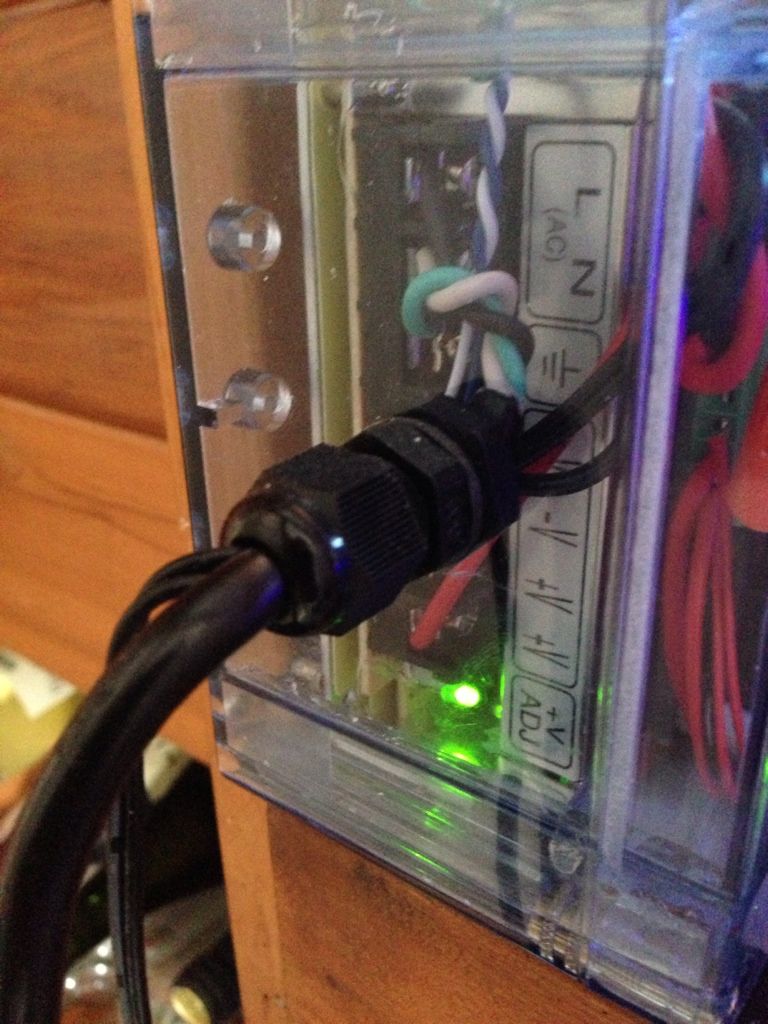Quote:
Originally Posted by mike31154

Great stuff. Those clear polycarbonate enclosures are very nice indeed, but looking at your photos, specifically the one below, I have a concern/caution you may wish to look into further.
|
Oh, sweet! I'm glad you brought this up! I totally forgot to get into this but I actually spent a ton of time on this fact and wanted to talk about it.
First things first, the polycarbonate enclosure is actually a see-thru washdown enclosure that has a gasket that allows service in wet conditions. I won't call it waterproof but it's seriously water resistant. We actually used the same enclosure to make a payload box for my friends ROV project and it didn't leak (I was actually really surprised by that). Where the wires come into the enclosure I use waterproof strain relief.

Again, I wouldn't be sticking this thing into my tank but it'll handle some major spills. I also use this sealing wax that I get from work on the screws, screen and DIN connector to make them water resistant (I can't remember the name of the stuff right now, I'll have to look again when I remember). So the thing is really water tight. Also, there is 3 ft of cable from the box to the cube and I have the controller mounted in a spot away from the tank. If I'm getting significant amounts of tank water on the controller, the electronics are going to be the least of my worries.
So, water: not an issue.
Heat: Very good point.
I really wasn't wanting to drill vent holes into my nice waterproof enclosure but was prepared to do it if necessary (I actually designed a super cool bubble pattern that I was going to mill into the enclosure and then laser etch on top of). But when I was picking my electronics (particularly the power supply) I looked for parts that were rated for service in enclosed spaces and had thermal protection. Once the electronics were together I tweaked the power supply output to minimize the amount of power that needed to be sunk, thus keeping the heat down. Also, being the engineering nerd I am, I did some quick back-of-the-napkin calculations to see what the temperature rise would be and I was well in the acceptable working range. Because I had thermal protection I felt confident enough to just let it run for a few days completely enclosed to see what would happen. Luckily, I had a few days I needed to stay at home to work on some designs when this project was going online, so I was around to babysit. I tossed a temperature datalogger into the enclosure, buttoned it up and set the thing to full power (on a typical daily cycle). The temperature only went up to 30C in the box and on the outside the enclosure feels warm (as in higher than ambient) but not hot. In fact it runs much cooler than the controller for my MP10. We're pushing 5 months now and the temperature of the enclosure hasn't been an issue (and my house gets REALLY hot in the winter because we are on the top floor and no control over our heating).
Some other notes about thermal management and electronics: With the way I have the driver board mounted, there is free space around the whole board to allow for convective cooling, especially if I end up cutting vent holes into the enclosure. The power supply has vent holes in it for conductive cooling but also have a solid slug that is used for mounting as well as conducting heat to a chassis. I mounted this slug in direct contact with the side of the enclosure to help dissipate heat (won't dissipate a ton of heat due to conducting through plastic but it's butter than nothing). This is the warmest spot on the enclosure. Also, I put a 1/16" thick silicone sheet on top of the power supply underneath the drivers to prevent the driver PCB shorting to the power supply chassis. The lid is plastic after all and if someone pressed hard enough it could conceivably make contact with the power supply and short. Play it safe!
**Disclaimer: I would encourage others to err on the side of keeping all of the electronics cool and ventilated unless you are familiar with your components. I build solar research set ups that work in full wet conditions, so I've built a number of power supplies into these washdown enclosures and am quite familiar with their design and thermal behaviour. Again: Play it safe!